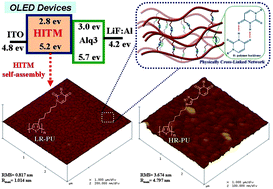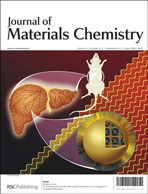Bioinspired hole-conducting polymers for application in organic light-emitting diodes†
Abstract
A novel uracil-functionalized poly(3-thiophene) as a hole-injecting/transporting layer in an organic light-emitting device is able to form physical crosslinkages resulting in high thermal stability, non-corrosion, excellent hole injection/transport and electron-blocking capabilities in the solid state, and it achieves up to 10 times higher performance than that of conventional poly(3-thiophene)s under similar experimental conditions.


 Please wait while we load your content...
Please wait while we load your content...